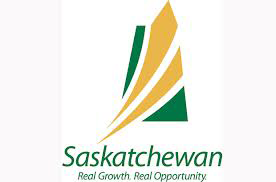Oil revenue, or lack thereof, figured heavily in the March 22, 2017, provincial budget, tabled by Finance Minister Kevin Doherty.
The budget forecasts WTI oil to be priced at US$56.25 per barrel. That’s an increase from last year’s budgeted value of US$44.88. It actually worked out to closer to US$48.71, the forecast for the fiscal year ended March 31, 2017.
The light-heavy oil differential is forecast to be 19.5 per cent of WTI. The wellhead production price is budgeted at C$55.30.
Oil production is expected to remain almost flat, with 163.9 million barrels for the 2017-2018 fiscal year. That’s almost exactly what the forecast is for the year ending March 31, 2017, which was 164.9 million barrels. In 2014-2015 we saw a record of 187.4 million barrels for the year. If the next year’s forecast comes true, Saskatchewan will produce an average of 449,000 bpd.
The Canadian dollar is expected to average 74.95 U.S. cents.
Oil and natural gas revenues are now lumped together in budget documents, as natural gas revenues are now marginal compared to oil. For the 2017-18 year, oil and gas are expected to bring in $670.4 million, roughly half of what was realized in the 2014-2015 fiscal year, when it accounted for $1.3 billion. However, that $670.4 million is up from the forecasted total for the last fiscal year of $557.7 million.
Land sales are expected to bring in only $52 million. That’s a slight increase over the last tow years, but less than a third of 2014-2015’s $164.9 million.
For 2017-18 it is estimated that a US$1 per barrel change in the fiscal-year average WTI oil price results in an estimated $16 million change in oil royalties. A one U.S. cent change in the fiscal-year average exchange rate results in an estimated $22 million change in non-renewable resource revenue.
While the ministry has pegged price of oil at 56.25/bbl. WTI, it was trading below US$50 when the budget came out. It was briefly above $56 for May and June 2015, and not to that level since. Prior to that, the last time oil was US$56.25/bbl., it was December 2014.
On March 23 Pipeline News spoke to Minister of Energy and Resources Dustin Duncan. Asked if pegging the price of oil at US$56.25 was a prudent move, he replied, “We look at a half dozen, if not more, forecasts, before we make our decision on where we’re going to peg oil. Jan. 1, it was US$53.75. March, it was US$53.72, but today it’s US$48. US$56.25 is on the more conservative side, in terms of the average of all the different forecasts that we use. But again, one of the aims of this budget was to take out some of the volatility that the provincial budget relies on in terms of commodities.”
“That’s part of the change in this budget, is to try to reduce that reliance on what can be volatile resource revenue.”
Asked if there has been consideration of a sovereign wealth fund, Duncan noted that there had in the past been a discussion, based on a report done by former University of Saskatchewan president Peter McKinnon. “The premier certain expressed interested in the idea, and support for the idea, notionally. Our intent always was to pay off the operating debt of the province before we started looking at something like that. It’s still something government’s considering. Now is probably not the time from a resource revenue perspective. Notionally, it would still make sense, but we still have a provincial operating debt we’re paying off.”
He noted that in 2014-15, resource revenue was about 20 per cent of the revenue of the province. “This year, we would be about 10 per cent. We’re about $1.3 billion, overall, not just oil, but potash and others. It’s one of the factors of the budget we presented yesterday.”
“It’s down well over a billion from what we were three years ago.”



